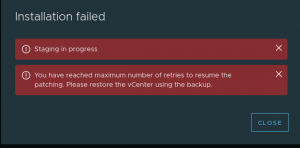It’s been over a month since my last post, I have been involved in a side project that I am very excited about and in the process of developing. However, more to come on the later on.
What’s worse than having a VM, disk, controller, RAM stick or even a host fail? Well, what about not knowing it has failed??? Have you ever turned up to work, gone and grabbed a coffee on the way through to your desk, sat down and started reading through the emails you received over night to get them out of the way only to have the phone start ringing off the hook.
“I can’t access the company portal.”
“I can’t send any emails”
“I’m getting a weird message about something called a server being offline?”
Straight away you jump into the vSphere client to check what is going on, low and behold, a host has failed and several VMs have not migrated and restarted, as per the cluster HA policy.
How could have you known sooner so that you could get those VMs back up and running before getting your morning coffee? Enter, RVTools and vCheck.
RVTOOLS – http://robware.net/index.php/5-sectionarticle/category/29-rvtools-home
This is an awesome little program design by Rob De Veij from Amsterdam. It is full of excellent information for you to oversee your vCenter infrastructure. Started in 2008, the program has evolved to include many features from just your individual VMs with information about their hardware through to whether or not they have a heartbeat. Your datastores and their sizes and the percentage or free storage left.
RVTools is a simple install and simple to use. Once installed, just open the desktop icon and log onto your vCenter, just as you would with the vSphere C# Client, it even allows you to use your Current Logged On User account.
 |
| Figure 1.1 – vInfo |
In Figure 1.1, you will see the number of tabs that are available to display huge amounts of information, but keep it all quick and simple to view. In vInfo, apart from how many CPUs, and how memory is allocated to the VM, you will also find fault tolerance enable/disable, FT bandwidth and latency, the HA restart priority for each VM and isolation response. There is so much more.
 |
| Figure 1.2 – vDisk |
 |
| Figure 1.3 – vPort |
The last tab is vHealth, it is a very handy tab to have as it quite specific on any errors, or non compliance that may be in environment. It will tell you if a host/Vm is unable to be reached, or if a datastore is running out of room and has less than 10% left of storage.





